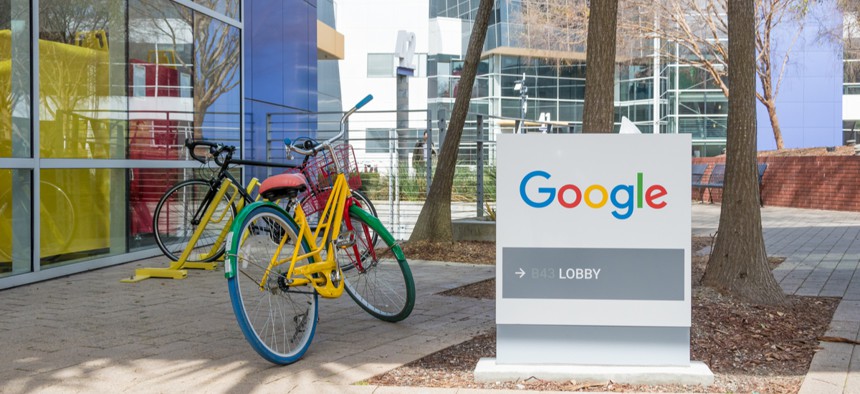How Far Will Google’s Billion-Dollar Bay Area Housing Plan Go?

Dreamframer/Shutterstock.com
The single largest commitment by a private employer to address the Bay Area’s acute affordable housing crisis is unique in its focus on land redevelopment.
On Tuesday, Google announced plans to invest $1 billion dollars in land and money to construct housing in the Bay Area over the next decade. The search giant is the third major tech employer this year that has pledged to address an acute housing shortage in its surrounding community. Yet Google’s commitment is different, not only for its size, but also for its focus on land.
The bulk of Google’s investment will come in the form of property that’s worth $750 million, the company says. This is land that Google already owns around the Bay Area and that it now plans to repurpose for residential use, CEO Sundar Pichai explained in a blog post. Parts of the company’s present and future office campuses in cities such as Mountain View, San Jose, and San Francisco would be rezoned and converted to “new homes at all income levels ... including housing options for middle and low-income families,” Pichai wrote.
Another $250 million will fund incentives for developers to create 5,000 affordable homes in the region. Google estimates it could spur the construction of 20,000 new units.
The commitment echoes housing pledges made by other technology giants this year. In January, Microsoft committed $500 million in tax incentives and loans to generate housing in Seattle. Weeks later, the Partnership for the Bay’s Future, a consortium of Bay Area philanthropists that includes Facebook CEO Mark Zuckerberg, announced a $500 million donation to preserve and produce more affordable housing in their region.
The growth of the tech industry has put a high premium on available housing in both West Coast hubs, and new construction isn’t keeping up with need. In 2017, the Bay Area added 3.5 times as many jobs compared to housing units, according to data from the Metropolitan Transportation Commission and the Association of Bay Area Governments. With median home prices around $1 million in the region, companies are finding it increasingly difficult to attract and retain talent.
Google’s housing pledge represents the largest single commitment to address the problem from a private employer yet. It also stands out for its promise to unlock land. One of the principal barriers to new construction is the cost of re-developable land, an increasingly scarce commodity in the Bay Area, said Todd David, the executive director of the San Francisco Housing Action Coalition. “The dollars that one would have to spend to build are fungible,” he said. “If you save the money to acquire, then you can produce the housing.”
While many large employers around the Bay have begun to build accommodations for their own workers, David said he was not aware of any other that has unlocked its land to house the general population, as Google is pledging to do. The exact size and market profile of new construction will be determined as the company works with city governments and leases its land to developers, a Google communications officer said. As an example, he pointed to Google’s current proposal for a mixed-use development in the Mountain View neighborhood of North Bayshore, as well as its agreement with San Jose to combine residential and office space with transit connections as the company builds a new campus there.
Google’s commitment implies a similar mixed-use development pattern, and it drew praise from Teresa Alvarado, the San Jose director of SPUR, a Bay Area urban planning research organization. “This integrated mixed-used land use pattern is exactly what we need to see,” she said. Bay Area communities have tended to sprawl outwards, saddling workers with lengthy commutes and causing congestion, Alvarado said. “This provides the first real model of what that can look like.”
Many questions are yet to be answered. In such a pricey region, how far is $750 million likely to go? For reference, Google spent $1 billion on a 52-acre office park in Mountain View in late 2018, and another $110 million on 10.5 acres in downtown San Jose. The promised 20,000 new housing units will also not appear overnight. The company will have to work with cities and counties to rezone and obtain permits to repurpose its properties. These processes have encumbered housing construction around the Bay, too, in many cases more so than high land costs themselves. Lawmakers have sought to revise local zoning codes restricting high-density development, but Silicon Valley homeowners resist fiercely, arguing that the housing problem lies with overgrown tech companies.
Alvarado predicts that California’s NIMBY groups may find new grounds to challenge Google’s housing plans; whether local officials will side with the company or affluent homeowners remains to be seen.
Still, housing advocates are hopeful that other large employers will follow the lead of Google’s announcement, which comes after years of criticism for the negative local impacts of its rapid growth (and one day before its annual shareholder meeting). As housing prices continue to spiral up, taking a more direct role in addressing the crisis may be in their self-interest.
Carl Guardino, the CEO of the Silicon Valley Leadership Group, a policy advisory group that represents 360 area companies, told the Wall Street Journal in March that, for his members, “any new job that doesn’t absolutely need to be in the Bay Area is located outside of the Bay Area.” Now he’s applauding Google for putting its own resources into fixing the problem. “When most in the Bay Area cry ‘Not In My Backyard,’ Google is saying ‘Yes, In Our Own Yard,’” he said.





